About
The City of Fargo owns and operates a water treatment plant capable of producing 30 million gallons per day (MGD) in accordance with United States Environmental Protection Agency (EPA) and North Dakota Department of Health regulations.
On the average, we treat almost 11 million gallons of water per day, with a peak summer demand of around 23 million gallons. Treated drinking water is pumped into the water distribution system by the high service pump station located on 13th Avenue South and 5th Street. The station pressurizes the entire water distribution system.
There are nine water towers in the system, two 1-million gallon tanks and seven one-half million gallon tanks. The water towers provide storage for fire protection and peak demand periods.
Byproducts of the water treatment process, primarily lime sludge, are hauled to the city landfill where they are used for daily cover.
The regulation of drinking water by the federal government began with the 1976 Safe Drinking Water Act. New and more stringent regulations have been added by the EPA almost every year since then. The drinking water industry is the most heavily regulated industry in the country.
Other Water Sources
The City of Fargo enjoys access to multiple water supply sources. Historically, the City of Fargo has used the Red River as its primary water source for drinking water for the City’s residents. The City has senior water rights to the Red River and sufficient water appropriations to use 100 million gallons of water per day (today’s average water demand is only 12 million gallons per day).
Over time, the Sheyenne River has played a more significant role in the City’s water supply strategy, and the City can access up to 16 million gallons per day from the Sheyenne River. The City relies on water from both the Sheyenne River and the Red River for supply redundancy, to ensure water quality goals are met, and to reduce treatment costs. The multiple water sources provide source water protection in the event of contamination or water shortages in one of the sources.
Today, the City of Fargo also owns 52 percent of the stored water rights to Lake Ashtabula, acquired by funding construction of the Baldhill Dam at Valley City. During a drought, water from the lake can be released into the Sheyenne River to provide water for Fargo’s needs. Approximately a 2-year supply of water exists in the lake. Historically, this source was used during the dry years of 1976, 1984, and 1988.
Future Water Needs
Future water needs are being addressed by the City of Fargo through an adaptive management approach involving various mechanisms. First, the City closely monitors its water sources in an effort to predict water shortages and makes sure adequate water appropriations are available to meeting future water needs. Secondly, in the event of drought, the City has a drought management in place that when fully enforced is expected to curb peak water demands by more than 30 percent.
The drought management plan aims at ensuring essential citywide water uses are not jeopardized. Learn more about the City of Fargo Drought Management Plan. Finally, the City of Fargo recognizes the drought susceptibility of the region and actively participates in the development of the Red River Valley Water Supply Project. When completed, the Red River Valley Water Supply Project will convey Missouri River water to the Red River Basin to supplement existing water supplies and minimize the impacts of severe drought on the City of Fargo’s water needs.
Overall, the City of Fargo is well positioned to meet the water needs of our rapidly growing community.

